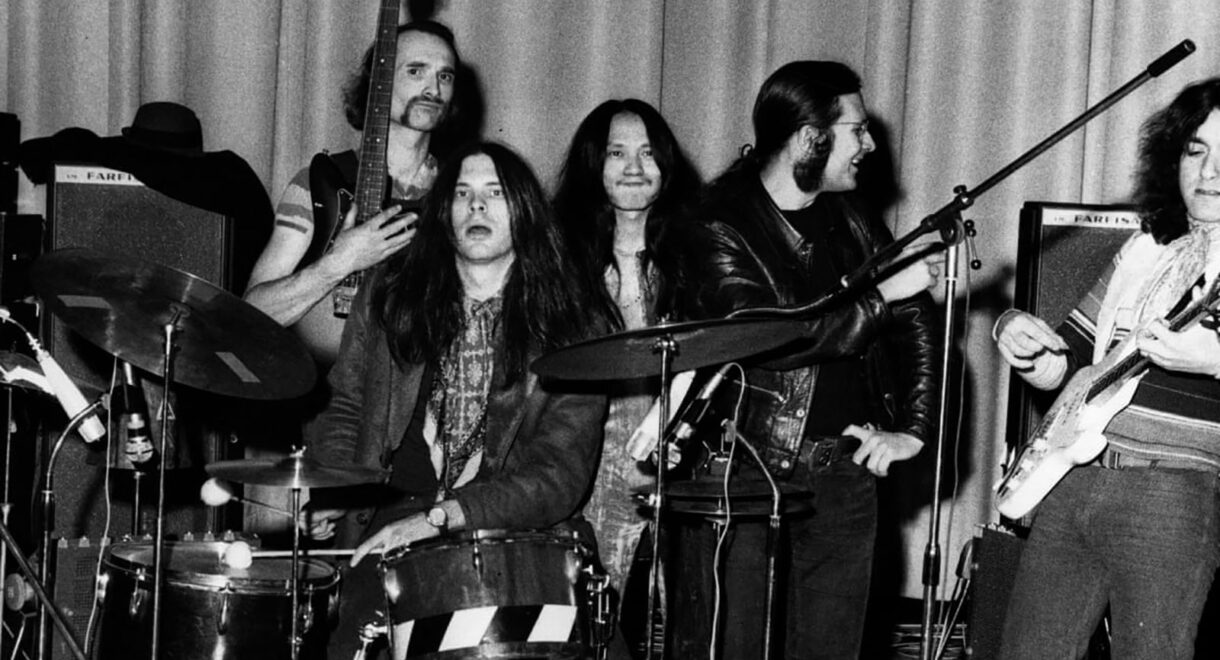In 2022, the BBC broadcast a documentary that traces the history of the Hacienda, the Manchester club that helped transform the sound of electronic dance music in early […]
99 Records: Essential Releases from the Early 1980s ‘No Wave’ label
- 99 Records /
- Deep Dive /
- ESG /
- Liquid Liquid /
- No Wave /
- Post-Punk

Punk, disco, hip hop and experimental. A look into the seminal New York City ‘No Wave’ label.
New York City in 1980 was at a musical crossroads: the disco scene that fueled 1970s revelry was fading and the punk scene born at CBGBs had by then turned into a kind of major label talent show. Rap was moving from block parties to recording studios. The skronky, nihilistic No Wave movement had earned a compilation produced by Brian Eno.
The influential label 99 Records was born in this environment and documented the fertile scene inspired by punk, disco, hip hop and experimental music. Founded by music fan Ed Bahlman in part of his girlfriend’s Greenwich Village shop at 99 MacDougal Street, the label only put out 23 records in its five year existence, but each is a singular achievement.
Sadly, an unauthorized sample of “Cavern,” by 99 band Liquid Liquid, led to the label’s demise. Employed in Grandmaster Flash & the Furious Five’s early rap classic “White Lines (Don’t Do It),” the sample wasn’t credited and 99 sued. Despite a successful outcome, legal fees outpaced 99’s ability to remain profitable.
Some of these records now fetch a ton of money, but keep an eye out at used shops, as some of these can still be tracked down in the wild. What follows is a selection of 99 Records to own.
Glenn Branca – Lesson No. 1 (1980)
The din-delivering composer Glenn Branca was a connector who had begun assembling a posse of guitarists for an upcoming series of projects when he nudged Bahlman to issue “Lesson No. 1” in 1980 as 99’s first release. Among them were upstart musicians including members of Sonic Youth and Swans, and listening to “Lesson No. 1” in that context will forever change the way Sonic Youth’s music enters your ears. This is a massive instrumental.

Y Pants – Beat It Down (1982)
The defiantly unpracticed trio Y Pants is best known as an early launching ground for the late photographer Barbara Ess, a downtown NY fixture and fanzine publisher who was Branca’s creative and romantic partner for two decades. Best known for her pinhole photography, Ess and fellow members Virginia Piersol and Gail Vachon released their debut single on 99.
Sounding like some cross between the Slits, Wire and labelmates the Bush Tetras, the 99-released single “Little Music” is a primal, jerky post-punk document. The trio issued their only album the next year on Neutral, which Branca started after having a falling out with Bahlman. Branca wanted 99 to put out a record by a band named Sonic Youth. Bahlman declined. Sadly, Ess passed away earlier this month.

Liquid Liquid – Optimo (1983)
An absolutely essential EP, the post-disco rhythm group Liquid Liquid’s “Optimo” EP from 1983 is a four-track banger that captures the intersection of disco, hip hop and post-punk fueling New York at the time. Its tracks, most notably “Cavern,” have been sampled by artists including Grandmaster Flash, Guru, Carl Craig, Notorious B.I.G. and dozens more.
Note: after Liquid Liquid disbanded in the mid 1980s, co-founder Richard McGuire went on to become a noted illustrator and comic artist. His influential comic “Here” from 1987, which was later released as a long graphic novel, occurs on a time continuum stretching from the year 500,957,406,073 BC to 2033 AD — all while focused on the same corner of a home.

ESG – ESG (1981)
The great rhythm band ESG, like Liquid Liquid, was hardly a breakout success during its life on 99. But in the intervening decades, the group, which originally featured South Bronx-born Scroggins sisters Renee, Valerie, Deborah and Marie, their influence has grown. They took off after Tony Wilson, the founder of Factory Records (Joy Division, Durutti Column, Cabaret Voltaire), saw ESG play live in NY. He flew them to England where Martin Hannett produced them. The resulting music, some of the greatest dancefloor meditations of the past 50 years, prompted 99 and Factory to team up.
:format(jpeg):mode_rgb():quality(90)/discogs-images/R-350251-1204901072.jpeg.jpg)
Konk – Soka-Loka-Moki (1981)
A 1981 co-release with the group’s Konk Organizatiion, the Soka-Loka-Moki EP is worth including just for the video, which is a weird, ritualistic clip that likely required a few trips to the costume store. But even without the video, the single is memorably deep and minimalist.
:format(jpeg):mode_rgb():quality(90)/discogs-images/R-649305-1202674697.jpeg.jpg)
Maximum Joy – Stretch (1981)
Born after the dissolution of Bristol political punk band the Pop Group, Maximum Joy ditched polarizing lyrics in favor of unifying rhythms, and released a number of singles that predicted the rise of the so-called Bristol sound of Massive Attack, Tricky and Portishead. The single also captures a crucial moment: in addition to the studio version, it also features a “disco/rap mix” and a “Silent Street/Silent Dub” version.
:format(webp):mode_rgb():quality(90)/discogs-images/R-15599045-1594318836-5274.jpeg.jpg)
Vivienne Goldman – Dirty Washing (1981)
This post-disco classic was born through friendships that London writer, connector and erstwhile Flying Lizards member Vivienne Goldman made during her youth at the center of the city’s post-punk movement. It’s a lesser-known masterpiece.
A measure of her talent can be found in the collaborators on this EP. They include Public Image Ltd. guitarist Keith Levene, legendary artist Robert Wyatt, bassist George Oban (Burning Spear, New Age Steppers, Dub Syndicate), Steve Beresford (the Slits, Red Krayola, Flying Lizards and more) and the Raincoats’ violinist Vicky Aspinall. The EP is highly recommended, but those on a budget should track down “Resolutionary,” the recent collection issued by Staubgold.










